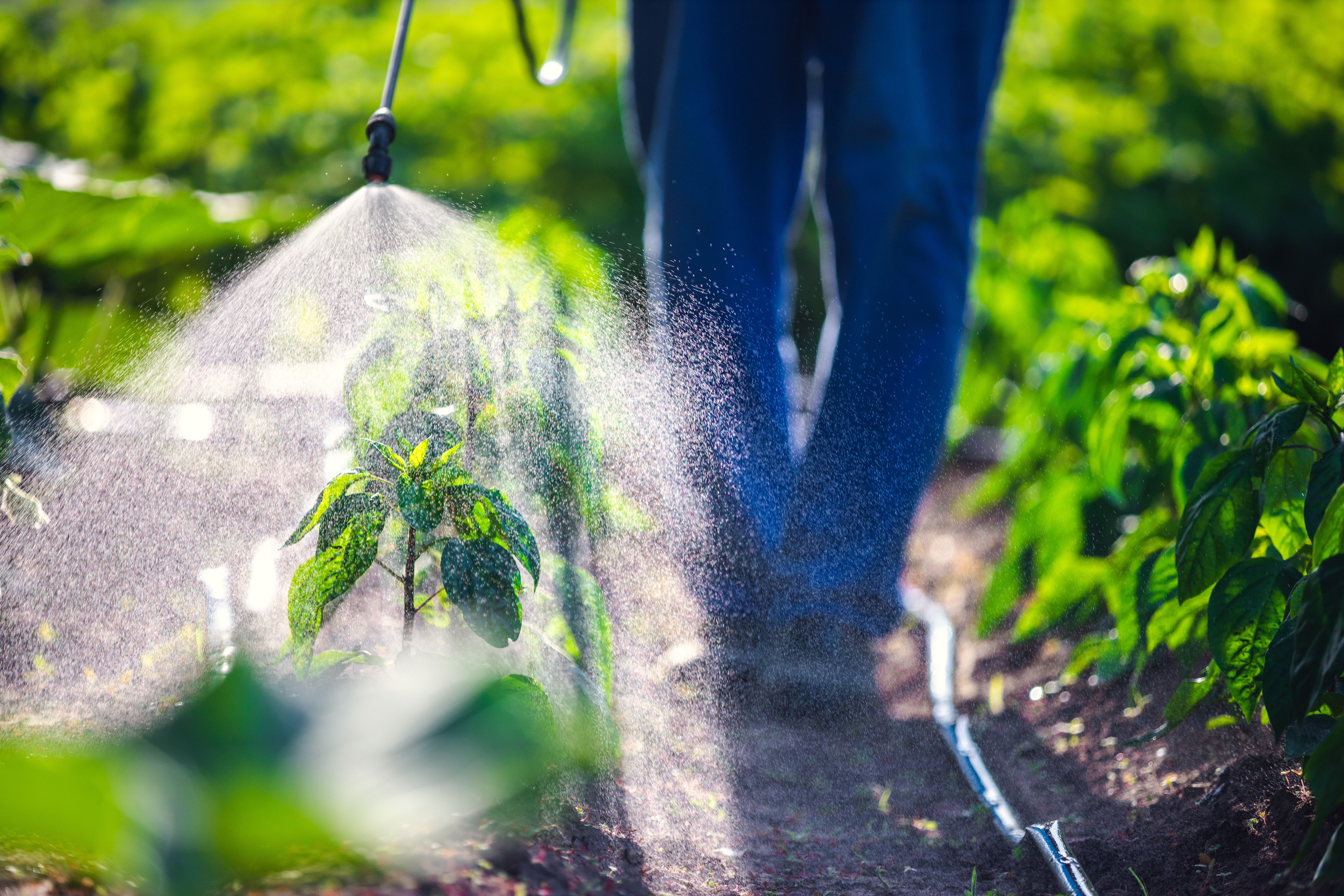Deep Eutectic Solvent Synthesized for Coating Paper in Sorptive Phase of Herbicide Analysis
The combination of deep eutectic solvents (DESs) and cellulose paper, according to the researchers, bridges a current gap in sustainable, paper-based sorptive phases.
Researchers from the Universidad de Córdoba in Spain have published their report on the development of a deep eutectic solvent (DES), produced by synthesizing thymol and vanillin, as part of the process of isolating and analyzing triazine herbicides (1). The thymol-vanillin DES was applied to cellulose paper strips which acted as the sorptive phase in the isolation, aiming to address limitations in sustainable sorptive coatings.
Farmer spraying vegetable green plants in the garden with herbicides, pesticides or insecticides. | Image Credit: © ValentinValkov - stock.adobe.com

The researchers, whose work appears in the Journal of Chromatography A, said that in recent years, more green and renewable materials for sorptive phases have been in demand, including cotton, wood, cork, and paper, with mechanically stable cellulose paper displaying several advantageous characteristics (1). However, the use of a natural substrate such as cellulose does not guarantee sustainability, which is where the addition of a DES provides value: combining the green characteristics of the DES coating with those of cellulose.
DESs are a unique class of solvents composed of a hydrogen bond donor (HBD) and a hydrogen bond acceptor (HBA) that interact to form a eutectic mixture with a significantly lower melting point than either of the individual components. DESs exhibit liquid-like properties despite being composed of solid or semisolid components at room temperature. They offer distinct advantages such as low cost, low toxicity, high thermal stability, and biodegradability. DESs have gained attention for their potential applications in various fields, including as environmentally friendly alternatives to conventional solvents in chemical reactions, as green solvents for extraction and separation processes.
For this study, six spiked triazine herbicides (namely, simazine, atrazine, terbumeton, secbumeton, prometryn, and terbutryn) were analyzed from river and well environmental waters. According to the authors, triazines and their degradants are present as contaminants in water, soil, and organisms. They are highly water soluble and also highly toxic (1). To mention two examples, contaminant level limits have been set for atrazine and simazine in environmental and drinking waters by both the European Union (EU) and the US Environmental Protection Agency (EPA).
In the course of their research, the authors found that the DES coating was fully dissolved before analysis, meaning that the sorptive phases themselves were not reusable; however, their biodegradability was enough for the authors to declare the approach is a sustainable one, adding that it was also within EPA limits (1). More research was suggested to try and find ways to prevent future iterations of coatings from detaching from their paper supports.
The true test of the DES coating came in evaluating its precision, sensitivity, and recovery values, all of which the researchers concluded were satisfactory following gas chromatography–mass spectrometry (GC–MS) analysis. All analytes yielded linearity values of R2 > 0.995. Limits of detection ranged from 0.4 to 0.6 µg/L, with precision correlating to a relative standard deviation of better than 14.7%. Relative recoveries were between 90% and 106% (1).
The researchers concluded that despite its drawbacks, coating a cellulose paper sorptive phase with a DES “fills a gap” in the sustainability of paper-based sorption and can effectively be used to quantify potentially harmful materials used in everyday agriculture (1).
Reference
(1) López-Ruiz, I.; Lasarte-Aragonés, G.; Lucena, R.; Cárdenas, S. Deep eutectic solvent coated paper: Sustainable sorptive phase for sample preparation. J. Chromatogr. A 2023, 1698, 464003. DOI: 10.1016/j.chroma.2023.464003
New Study Reviews Chromatography Methods for Flavonoid Analysis
April 21st 2025Flavonoids are widely used metabolites that carry out various functions in different industries, such as food and cosmetics. Detecting, separating, and quantifying them in fruit species can be a complicated process.
University of Rouen-Normandy Scientists Explore Eco-Friendly Sampling Approach for GC-HRMS
April 17th 2025Root exudates—substances secreted by living plant roots—are challenging to sample, as they are typically extracted using artificial devices and can vary widely in both quantity and composition across plant species.
Sorbonne Researchers Develop Miniaturized GC Detector for VOC Analysis
April 16th 2025A team of scientists from the Paris university developed and optimized MAVERIC, a miniaturized and autonomous gas chromatography (GC) system coupled to a nano-gravimetric detector (NGD) based on a NEMS (nano-electromechanical-system) resonator.
Miniaturized GC–MS Method for BVOC Analysis of Spanish Trees
April 16th 2025University of Valladolid scientists used a miniaturized method for analyzing biogenic volatile organic compounds (BVOCs) emitted by tree species, using headspace solid-phase microextraction coupled with gas chromatography and quadrupole time-of-flight mass spectrometry (HS-SPME-GC–QTOF-MS) has been developed.






